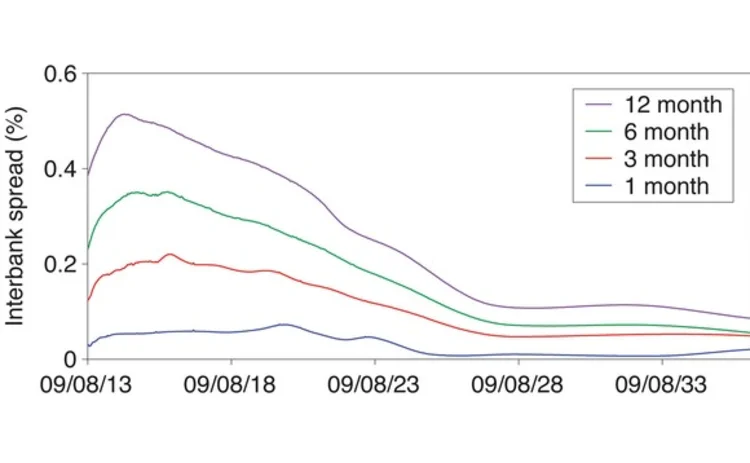
Credit goes to forward rate spreads
Commonly used as an indicator of a bank’s health, the spread between reference rates like Libor and the overnight indexed swap rate used to be close to zero until the onset of the crisis. After many years of high spreads, we know that it is now here to stay and so must be included in pricing models. Christian Fenger suggests a way to do this and gives a theoretical foundation, using a combination of a credit model and a rate-fixing technique

Since the onset of the financial crisis in July 2007, the spreads between expected fixings based on benchmark rates, like Libor and Euribor, and expected overnight indexed swap (OIS) rates have been significant, so it became necessary to involve new methods in the pricing of interest rate derivatives (Bianchetti 2010; Fujii, Shimada and Takahashi 2010; Mercurio 2009; Morini 2009; Piterbarg 2010). A typical picture of this new regime is displayed in figure 1. The figure shows the spreads between
Only users who have a paid subscription or are part of a corporate subscription are able to print or copy content.
To access these options, along with all other subscription benefits, please contact info@risk.net or view our subscription options here: http://subscriptions.risk.net/subscribe
You are currently unable to print this content. Please contact info@risk.net to find out more.
You are currently unable to copy this content. Please contact info@risk.net to find out more.
Copyright Infopro Digital Limited. All rights reserved.
You may share this content using our article tools. Printing this content is for the sole use of the Authorised User (named subscriber), as outlined in our terms and conditions - https://www.infopro-insight.com/terms-conditions/insight-subscriptions/
If you would like to purchase additional rights please email info@risk.net
Copyright Infopro Digital Limited. All rights reserved.
You may share this content using our article tools. Copying this content is for the sole use of the Authorised User (named subscriber), as outlined in our terms and conditions - https://www.infopro-insight.com/terms-conditions/insight-subscriptions/
If you would like to purchase additional rights please email info@risk.net
More on Interest rate markets
SABR convexity adjustment for an arithmetic average RFR swap
A model-independent convexity adjustment for interest rate swaps is introduced
NatWest Securities US Treasury trading head departs
Jason Sable joined the UK bank in January 2022 from BNP Paribas
CME in talks to clear term SOFR basis swaps
US clearing house has held discussions with some dealers about clearing term SOFR-SOFR packages
Risky caplet pricing with backward-looking rates
The Hull-White model for short rates is extended to include compounded rates and credit risk
The curious case of backward short rates
A discretisation approach for both backward- and forward-looking interest rate derivatives is proposed
Cross-currency swaps will use RFRs on both legs, says JP exec
Despite slow start, all-RFR swaps will become the market standard within a year, according to Tom Prickett
June mid-month auctions – Coupon and yield trends
As Treasury issuance amounts set new records, coupons at the front end of the curve have marched downward, while back-end coupons have lagged. Yield spreads across each popular measure show a consistent steepening of the curve through the first half of…







